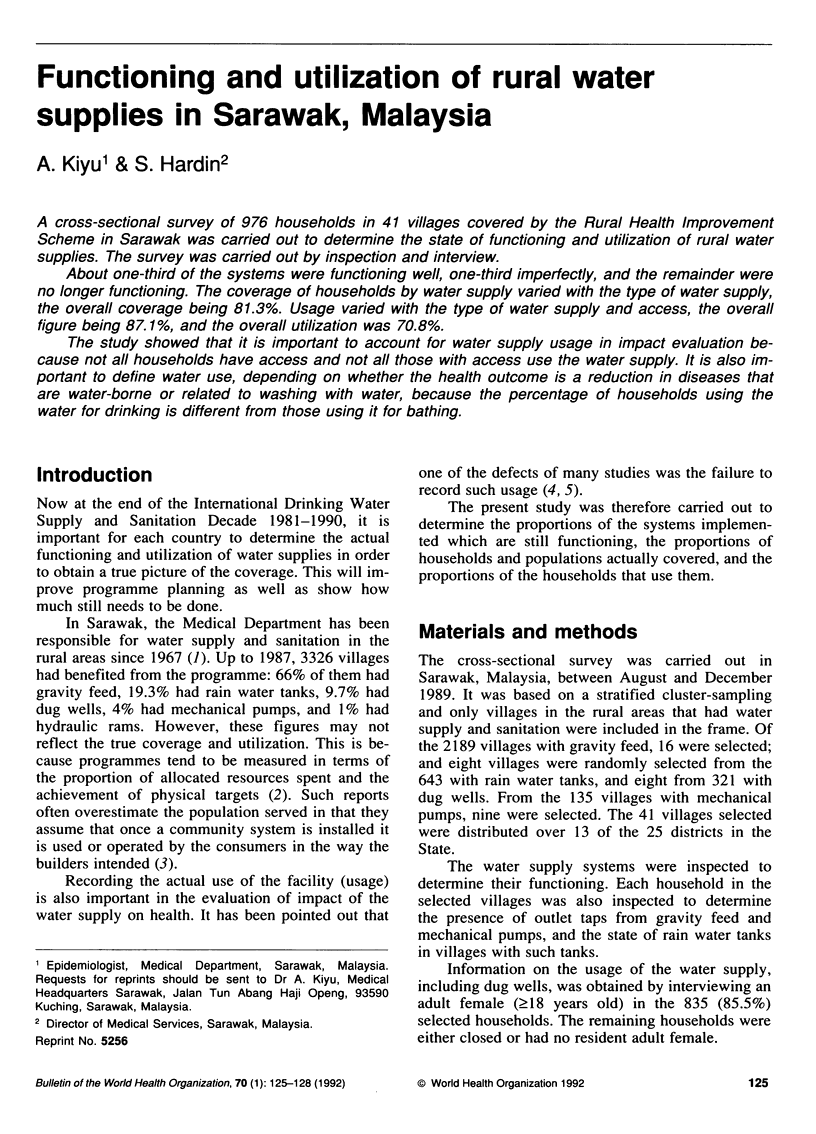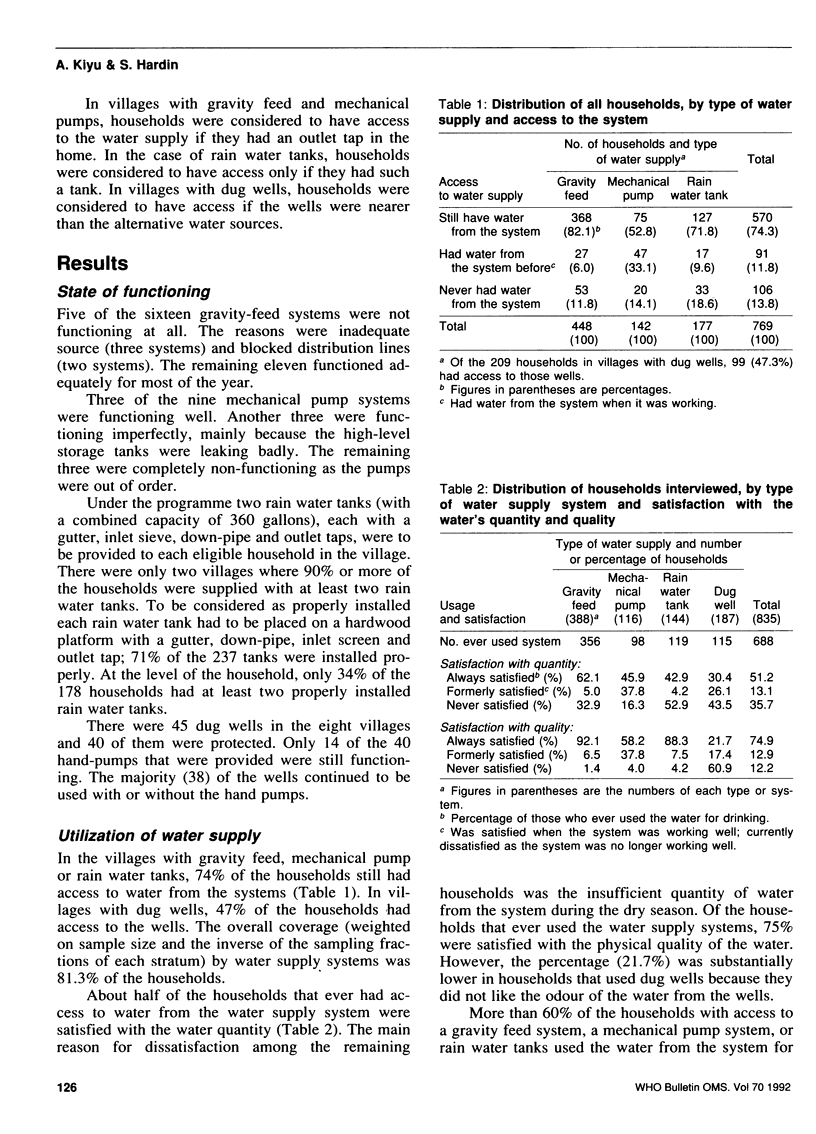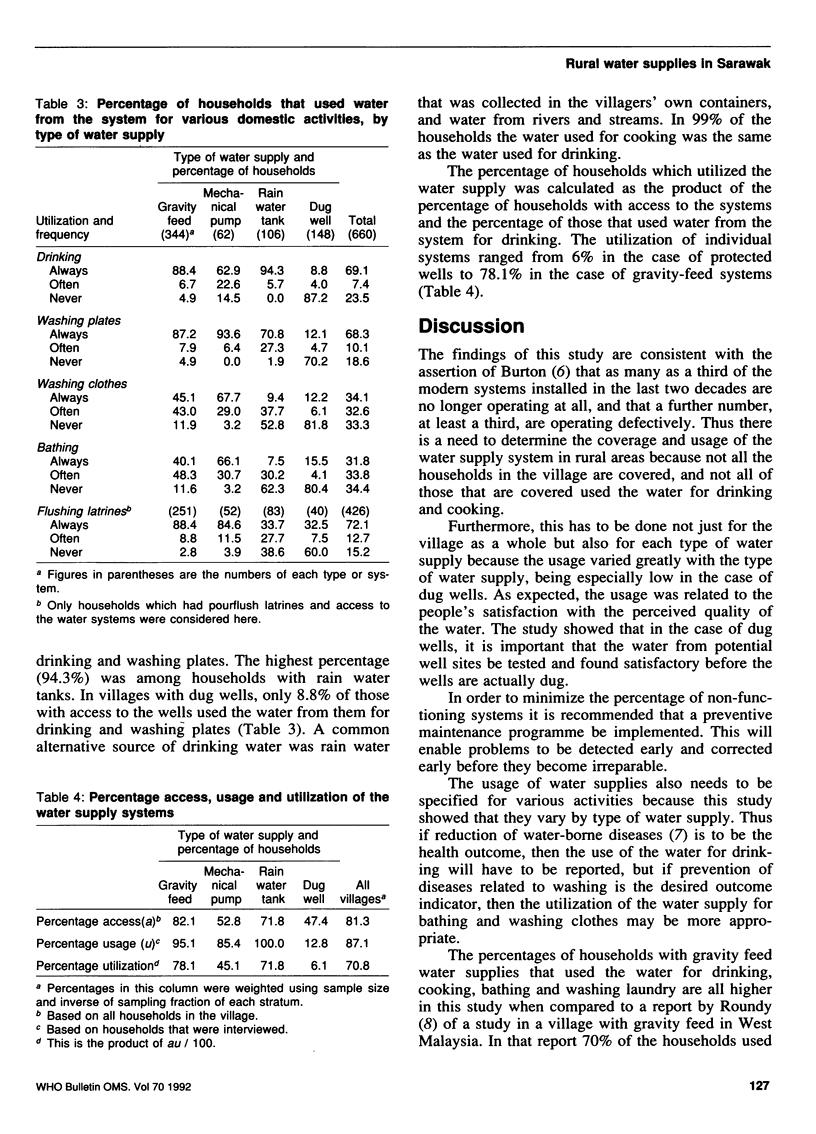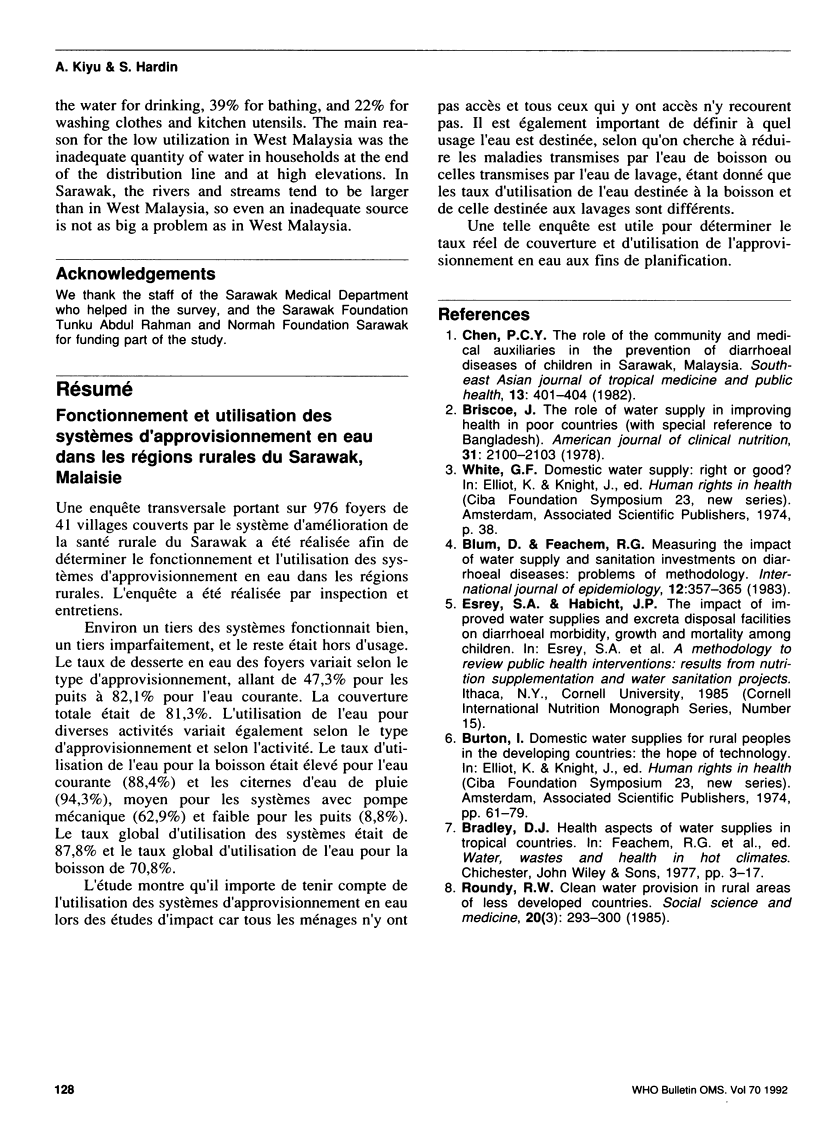Abstract
A cross-sectional survey of 976 households in 41 villages covered by the Rural Health Improvement Scheme in Sarawak was carried out to determine the state of functioning and utilization of rural water supplies. The survey was carried out by inspection and interview. About one-third of the systems were functioning well, one-third imperfectly, and the remainder were no longer functioning. The coverage of households by water supply varied with the type of water supply, the overall coverage being 81.3%. Usage varied with the type of water supply and access, the overall figure being 87.1%, and the overall utilization was 70.8%. The study showed that it is important to account for water supply usage in impact evaluation because not all households have access and not all those with access use the water supply. It is also important to define water use, depending on whether the health outcome is a reduction in diseases that are water-borne or related to washing with water, because the percentage of households using the water for drinking is different from those using it for bathing.
Full text
PDF



Selected References
These references are in PubMed. This may not be the complete list of references from this article.
- Blum D., Feachem R. G. Measuring the impact of water supply and sanitation investments on diarrhoeal diseases: problems of methodology. Int J Epidemiol. 1983 Sep;12(3):357–365. doi: 10.1093/ije/12.3.357. [DOI] [PubMed] [Google Scholar]
- Briscoe J. The role of water supply in improving health in poor countries (with special reference to Bangla Desh). Am J Clin Nutr. 1978 Nov;31(11):2100–2113. doi: 10.1093/ajcn/31.11.2100. [DOI] [PubMed] [Google Scholar]
- Roundy R. W. Clean water provision in rural areas of less developed countries. Soc Sci Med. 1985;20(3):293–300. doi: 10.1016/0277-9536(85)90244-8. [DOI] [PubMed] [Google Scholar]


